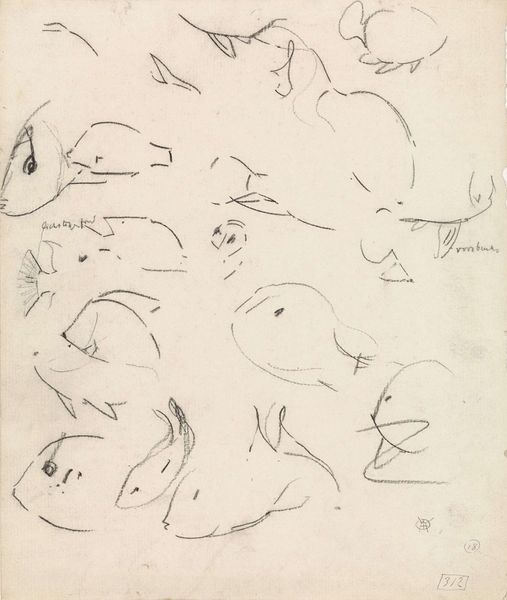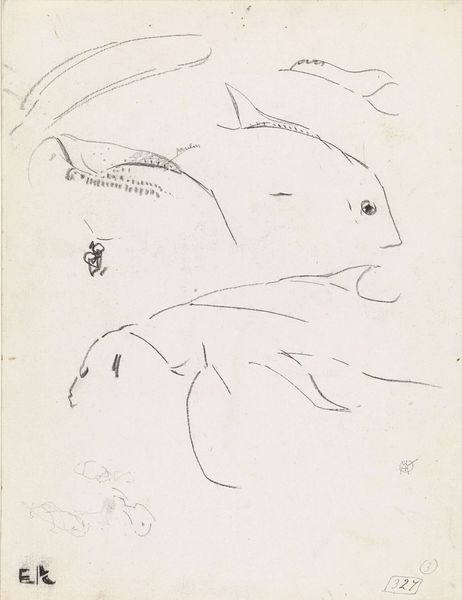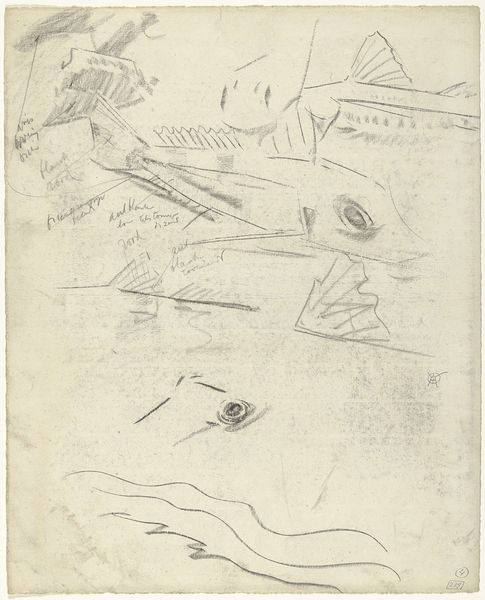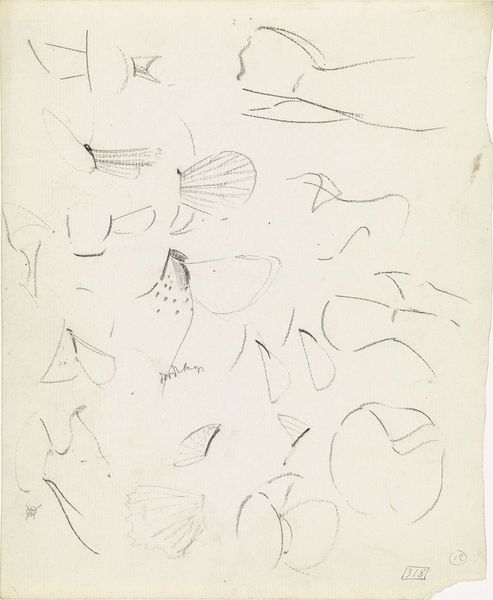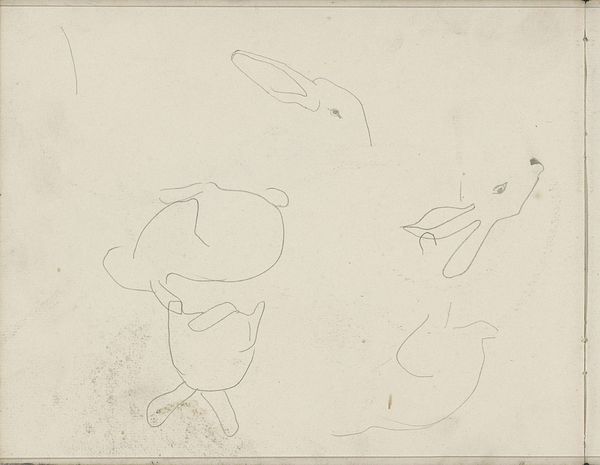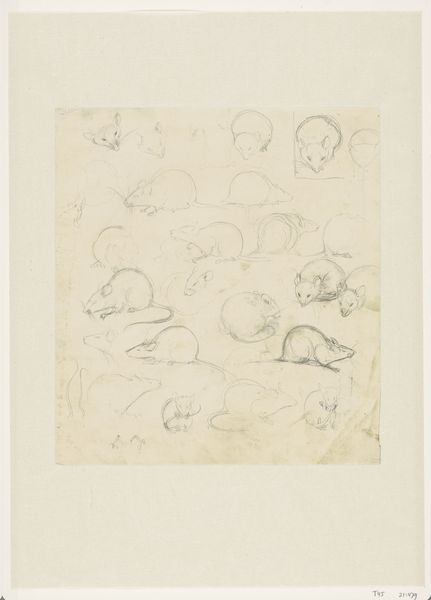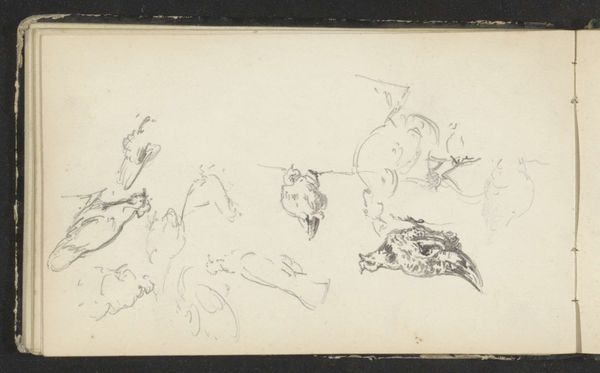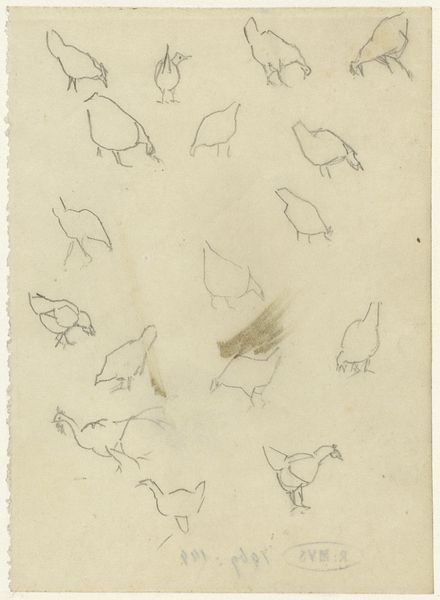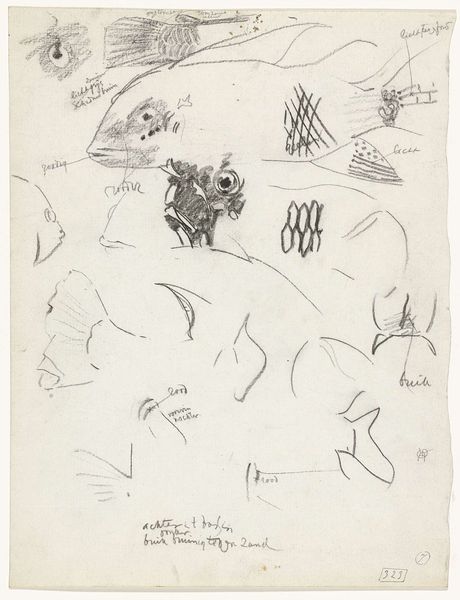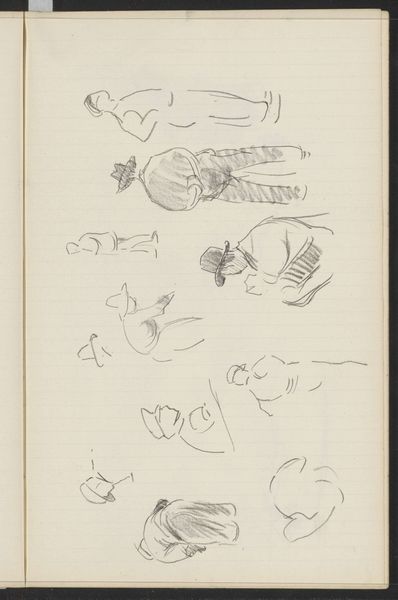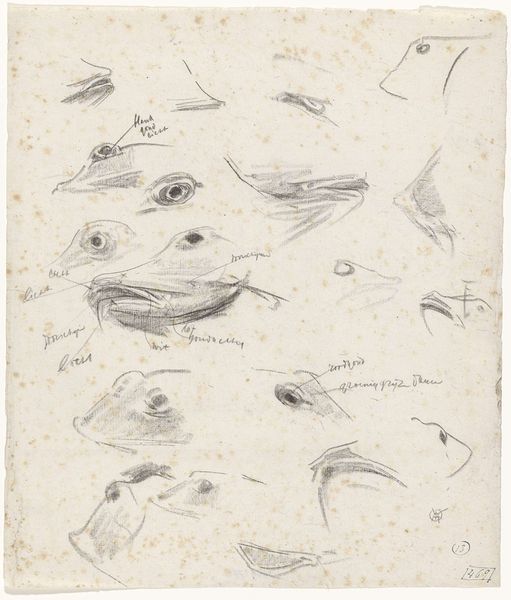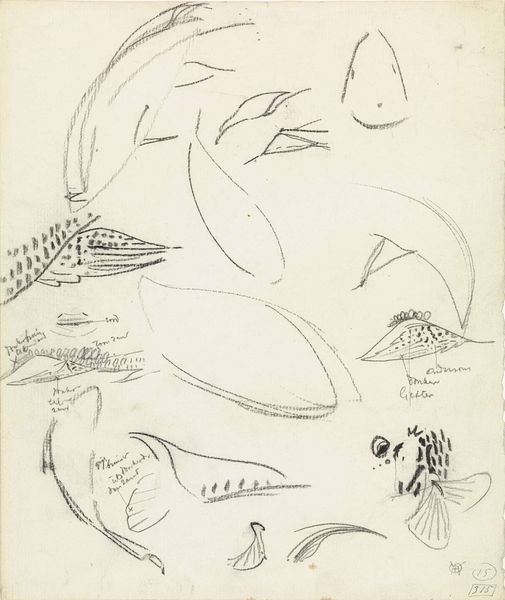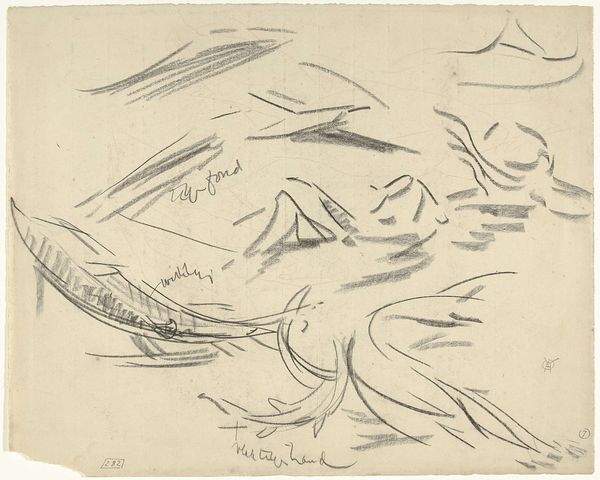
drawing, pencil, graphite
#
drawing
#
light pencil work
#
pencil sketch
#
figuration
#
personal sketchbook
#
idea generation sketch
#
sketchwork
#
ink drawing experimentation
#
sketch
#
pencil
#
line
#
graphite
#
sketchbook drawing
#
storyboard and sketchbook work
#
sketchbook art
#
initial sketch
Dimensions: height 291 mm, width 241 mm
Copyright: Rijks Museum: Open Domain
Curator: This interesting drawing from Rijksmuseum is entitled “Studies van vissen,” or “Studies of Fish,” by Gerrit Willem Dijsselhof, created sometime between 1876 and 1924. Editor: My initial reaction is one of quiet observation. It feels like a glimpse into the artist's personal musings, a private page from a sketchbook, the delicate lines creating a sense of movement just below the surface. Curator: Yes, observe how Dijsselhof uses line, the pressure and direction modulating to suggest form. There's a tension between representation and pure abstraction. It isn’t a naturalist depiction, but the structural rendering of these piscine subjects, almost architectural in its simplicity. Editor: Fish, of course, have a deep and layered symbolic meaning throughout cultures. The fish represents fertility, abundance, transformation; it’s also a religious symbol—Christ as the fisher of men. In personal sketchbooks such as this one, the symbolism gains intimacy; they may have represented his ideas about nature's fecundity and transformation during that time. Curator: And do consider how Dijsselhof presents variations on a theme; these studies allow us insight into the genesis of his ideas, revealing his approach to rendering. This is where we witness a pure and intimate engagement with form and line. Note the varied approach to shading, and how even small details impact the gestalt of the work. Editor: Right—it seems that this sketchbook study reflects on the subconscious meaning-making inherent in observing the natural world, something innate within our psyche—as it were, these symbolic meanings are fished out from the subconscious sea. Curator: Very well said! Dijsselhof has truly achieved an artwork where process informs our perception. Editor: Yes, it leaves me thinking about how symbols embed themselves in both our conscious and subconscious lives, like fossilised forms.
Comments
No comments
Be the first to comment and join the conversation on the ultimate creative platform.
